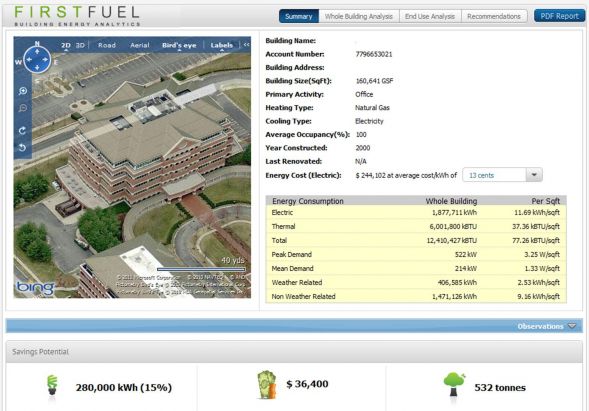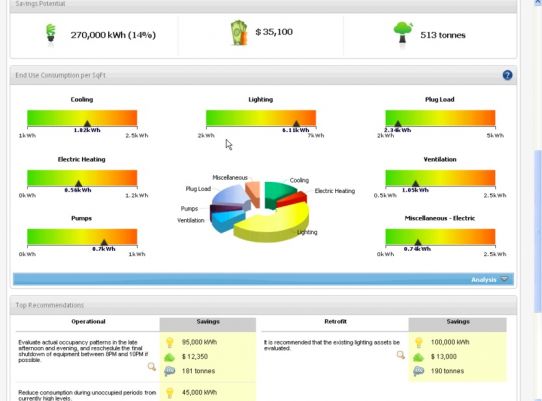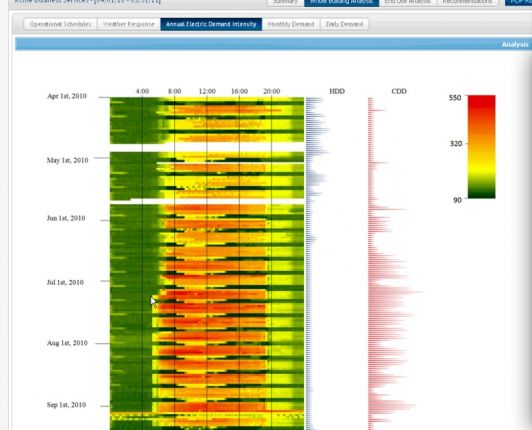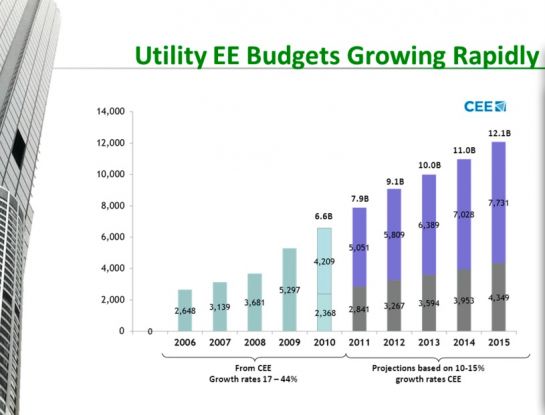FirstFuel Software just closed a $2.4 million round from Battery Ventures and Nth Power for its business of analyzing the energy patterns of commercial buildings.
While many building energy analysis firms have to reach out and "touch" the customer and install some type of sensors and monitoring equipment, FirstFuel Software never has to contact the customer. It's this non-intrusive, touchless process that allows the firm to scale.
In the words of the CEO, Swapnil Shah, FirstFuel provides "behind-the-meter intelligence for the utility without them having to go behind the meter." The firm does this without on-site audits or connectivity to building systems.
In fact, the firm suggests that actually meeting with the building manager does not always help them identify the biggest problems or the real energy bandits in a building.
The Process
The 16-employee Waltham, Mass.-based startup has proven in trials that its zero-touch process can remotely determine the energy characteristics of a structure -- like taking a CAT scan of the building.
The utility provides energy usage data for electricity and perhaps for gas on 15-minute or hourly intervals, as well as the building's address and physical location. FirstFuel then references that information to hourly climate data and maps that to sophisticated GIS information to understand the geometry and 'energy metabolism' of the building.
FirstFuel generates a highly detailed map of the building that yields square footage, elevation, number of floors, glazing characteristics, etc. and determines whether the building has chillers or an underground garage or heat pumps.
Here's an example:

The IP of the firm resides in its data analytics and the "ability to analyze the consumption patterns of a building remotely." FirstFuel can then provide a summary dashboard that shows that building owner which areas they should be focusing on to maximize the effectiveness of efficiency measures.
Should the building focus on plug load or lighting? Cooling or heating?
In this example, lighting and cooling are the areas that can stand the most improvement.

Seasonal patterns and insights are identified:

The "CAT scan" of the building can reveal weekend and weekday patterns using metrics like heating, cooling, weather and occupancy. The data can also reveal the impact of sun and wind and what percentage of energy is being lost through the building shell.

Once the data is analyzed and presented, the startup's software can make low-capital recommendations and provide guidance for retrofits. The firm can also recommend region-specific utility programs and rebates that the customer can exploit.
Instead of the utility just engaging with the customer via a bill, it can provide a meaningful dialogue with the customer and share best practices. Customers can communicate with the utility on these matters and the utility can apply these savings towards RPS goals or other PUC mandates.
Customers and Business Model
FirstFuel's customers are the utilities, not the building owners. And the size of the utility spend in energy efficiency is large. Commercial and industrial buildings made up 40 percent of the U.S. utility industry’s $6.6 billion energy efficiency budgets in 2010, according to the Consortium for Energy Efficiency. That total grows to $12 billion in 2015. According to the CEO, San Francisco, New York City, and Boston are all passing laws which require buildings to meet an efficiency mandate.
The startup is currently in paid pilots with large utilities that remain unnamed. The firm charges a per-building subscription fee and estimates that utilities will see a seven percent to eight percent aggregate savings.
And the market is not limited to the U.S.

Competitors like Scientific Conservation are about deep diagnostics at the HVAC system level, which typically accounts for about 40 percent of the building's energy use. Others like Enernoc must connect to real-time meters or control systems and sensors in the building. Pulse Energy and Aclara also participate in this market.
Rodrigo Prudencio, an investor in the firm at VC Nth Power, told Greentech Media via email that, "FirstFuel's solution works on all commercial buildings, whether or not these are managed through a building management system (and the vast majority are not). The fact they don't have to instrument or integrate into a building management system solves a huge problem around scalability and it solves the issue of relevance through a great user interface."
The CEO gave a good example of what the software can reveal. A LEED Platinum building had an enormous amount of daylighting that allowed the building to use practically no artificial light during daylight hours. But it turned out that the amount of energy saved by lighting reduction was more than offset by the air conditioning required to compensate for the sunlight-induced heat in the middle of the summer -- despite the building's LEED status.



